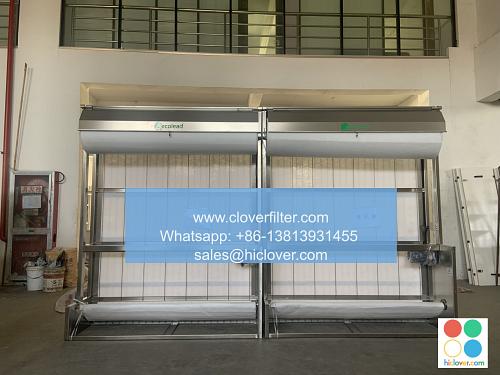The Role of Air Filters in Reducing Indoor Allergies and Asthma

Air pollution is a major concern in today’s world, and it’s not just outdoor pollution that’s the problem. Indoor air pollution can be just as harmful, and in some cases, even more so. One of the main contributors to indoor air pollution is allergens and asthma triggers, which can be found in dust, mold, pet dander, and other airborne particles. This is where air filters come in, playing a crucial role in reducing indoor allergies and asthma.
How Air Filters Work
Air filters work by removing airborne particles and pollutants from the air, improving indoor air quality. They can be installed in HVAC systems, vacuum cleaners, and even stand-alone air purifiers. By capturing allergens and other pollutants, air filters help prevent them from being inhaled, reducing the risk of allergic reactions and asthma attacks. HEPA filters, in particular, are highly effective in removing 99.97% of particles as small as 0.3 microns, making them a popular choice for those suffering from indoor allergies and asthma.
Application Areas
Air filters have a wide range of applications, including:
* Residential homes: Where they can be installed in HVAC systems to improve indoor air quality and reduce allergies and asthma.
* Commercial buildings: Such as offices, schools, and hospitals, where they can help create a healthier environment for occupants.
* Industrial settings: Where they can help remove pollutants and particles from the air, improving worker health and safety.
* Vehicles: Where they can be installed in air conditioning and heating systems to improve air quality while driving.
Benefits of Air Filters
The benefits of air filters in reducing indoor allergies and asthma are numerous. Some of the key benefits include:
* Reduced allergy symptoms: By removing allergens from the air, air filters can help reduce symptoms such as sneezing, congestion, and itchy eyes.
* Improved asthma management: By removing asthma triggers from the air, air filters can help improve asthma management and reduce the frequency of attacks.
* Improved indoor air quality: Air filters can help remove a wide range of pollutants from the air, improving overall indoor air quality.
* Increased energy efficiency: By removing pollutants and particles from the air, air filters can help improve the efficiency of HVAC systems, reducing energy consumption and costs.
Types of Air Filters
There are several types of air filters available, each with its own unique characteristics and benefits. Some of the most common types include:
* MEGA filters: Which can capture particles as small as 0.1 microns.
* ULPA filters: Which can capture particles as small as 0.12 microns.
* Activated carbon filters: Which can capture gases and odors, improving indoor air quality.
* Ionizing air filters: Which can capture particles and pollutants using an electrostatic charge.
Conclusion
In conclusion, air filters play a vital role in reducing indoor allergies and asthma. By removing airborne particles and pollutants from the air, air filters can help improve indoor air quality, reduce allergy symptoms, and improve asthma management. With their wide range of applications and benefits, air filters are an essential component in creating a healthier indoor environment. Whether you’re looking to improve the air quality in your home, office, or industrial setting, air filters are an effective and efficient solution. By choosing the right air filter for your needs, you can breathe easy knowing that you’re taking steps to improve your indoor air quality and reduce the risk of indoor allergies and asthma. It looks like you haven’t given me a prompt to work with. I’m ready when you are! What would you like to talk about, ask, or explore? I can provide information, answer questions, or even engage in a fun conversation. Go ahead and give me a prompt!

